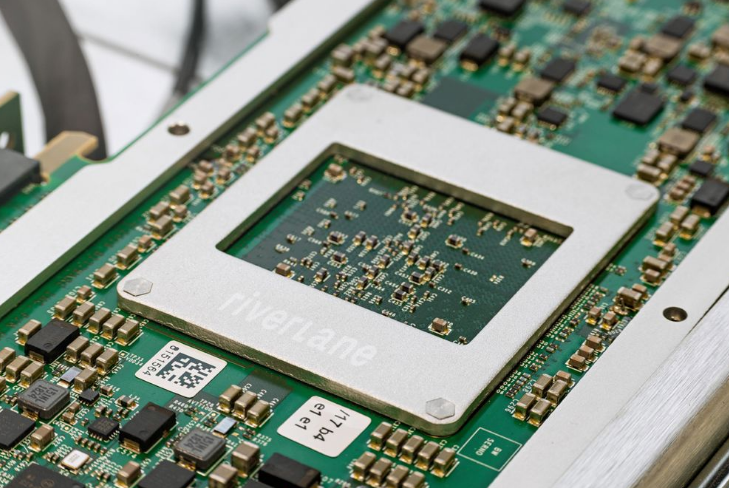Insider Brief
- Northwestern engineers demonstrated quantum teleportation over existing fiber optic cables carrying Internet traffic, proving quantum and classical communication can coexist.
- By identifying low-interference wavelengths and using special filters, the team successfully transmitted quantum information alongside high-speed Internet signals over a 30-kilometer cable.
- The work simplifies quantum network infrastructure and lays the groundwork for secure, long-distance quantum connectivity using existing systems.
Northwestern University engineers have achieved quantum teleportation over fiber optic cables already carrying Internet traffic, an advance that could simplify the infrastructure needed for quantum computing and advanced sensing technologies, the university is reporting.
The study, published in Optica, demonstrates that quantum communication can coexist with classical Internet signals in the same cable.
“This is incredibly exciting because nobody thought it was possible,” said Prem Kumar, an electrical engineering professor at Northwestern and the study’s lead researcher. “Our work shows a path towards next-generation quantum and classical networks sharing a unified fiber optic infrastructure. Basically, it opens the door to pushing quantum communications to the next level.”

What Is Quantum Teleportation?
Quantum teleportation is a way to securely share information over long distances without physically transmitting it. The process relies on quantum entanglement, where two particles become linked so that the state of one instantaneously affects the state of the other, regardless of the distance between them. This allows information to be transferred between particles that may be separated by kilometers, bypassing the need for direct physical transmission.
“In optical communications, all signals are converted to light,” Kumar said. “While conventional signals use millions of particles of light, quantum information relies on single photons.”
The process hinges on a “destructive measurement,” as described by Jordan Thomas, a Ph.D. candidate in Kumar’s lab and the study’s first author. “By performing a destructive measurement on two photons—one carrying a quantum state and one entangled with another photon—the quantum state is transferred onto the remaining photon, which can be very far away,” Thomas said. “Teleportation allows the exchange of information over great distances without requiring the information itself to travel that distance.”
The Challenge: Navigating Traffic
One major hurdle was proving that quantum teleportation could work in cables crowded with classical Internet signals. The delicate single photons used in quantum communication are easily overwhelmed by the millions of light particles that make up traditional Internet traffic. Kumar likened the challenge to “a flimsy bicycle trying to navigate through a crowded tunnel of speeding heavy-duty trucks.”
To address this, Kumar and his team studied how light scatters within fiber optic cables. They identified a less crowded wavelength of light for their photons and added filters to minimize noise from Internet traffic. This careful optimization allowed them to transmit quantum information alongside classical data without interference.
“We carefully studied how light is scattered and placed our photons at a judicial point where that scattering mechanism is minimized,” Kumar said. “We found we could perform quantum communication without interference from the classical channels that are simultaneously present.”
Testing the Breakthrough
To test the approach, the researchers used a 30-kilometer-long fiber optic cable with a photon at each end. They sent quantum information and high-speed Internet traffic through the cable simultaneously and measured the quality of the quantum information at the receiving end. The results confirmed that quantum teleportation worked, even with the added complexity of Internet traffic.
“Although many groups have investigated the coexistence of quantum and classical communications in fiber, this work is the first to show quantum teleportation in this new scenario,” Thomas said. “This ability to send information without direct transmission opens the door for even more advanced quantum applications being performed without dedicated fiber.”
Future Directions
Looking ahead, Kumar and his team aim to expand the experiments over longer distances and explore more complex quantum techniques, such as entanglement swapping. This involves using two pairs of entangled photons to extend the range of quantum communication networks. The team also plans to conduct experiments using real-world underground cables instead of lab-controlled spools.
Kumar believes these developments could pave the way for widespread quantum connectivity. “Quantum teleportation has the ability to provide quantum connectivity securely between geographically distant nodes,” he said. “If we choose the wavelengths properly, we won’t have to build new infrastructure. Classical communications and quantum communications can coexist.”
This work represents a significant step toward integrating quantum technology into everyday networks, making advanced quantum applications more accessible and practical.


















